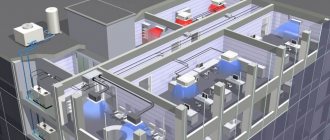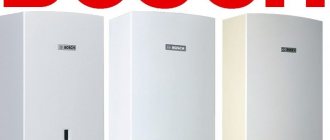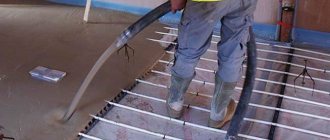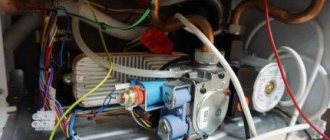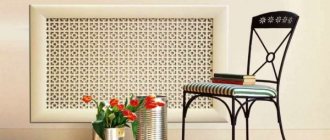Attention! Advertising of energy-saving electric radiators contains false information and misleads buyers! We do not sell Energy-saving electric radiators because we work honestly. Read more below.
If you need an electric heater, call us or choose from the catalog of electric convectors
Electric radiators have recently appeared on the heating equipment market.
Some manufacturers and sellers of these devices claim that by using them for basic heating, you can significantly save on electricity and effectively heat the room. Let's figure out what an electric radiator is and whether it can really be energy efficient.
You can read about the highest quality and most reliable heaters at this link.
Heaters "EffectEnergo" for summer cottages
Before the start of the dacha period, the issue of selecting heaters for the dacha is becoming increasingly relevant. There are a lot of offers on the heater market, but how to make the right choice, because a lot depends on the choice of the “right” heater, and often the life and health of the inhabitants of the dacha, as well as the safety of property. For the most part, country houses and dachas are wooden, and wood, as you know, is a very fire-hazardous material, therefore, the issue of safety should come first. In addition, an important factor is the cost-effectiveness of country heaters, because the amount of monthly payments for electricity may simply be unaffordable for most summer residents.
In this article we will give an example of calculating the cost of equipment and monthly payments for a small country house. For calculations we use a single-rate tariff for electricity of 2.29 rubles. kW, operating in rural settlements of the Leningrad region since January 1, 2015. The material of the country house is frame-panel, heating period is spring, autumn (dacha period). To heat dachas, we recommend using electric radiators “EffectEnergo” of the “Economy” series. These heaters can be installed on wooden surfaces, they can be left on without human supervision for a long time, they are equipped with a temperature control sensor in the room, and therefore are economical, and another important factor is that they do not dry the air and do not burn dust, that is, they do not create discomfort for a person.
To begin with, we will select the heater models necessary for comfortable heating of this house:
Living room 16.34 sq.m. – we install one heater EEE 6/1200 price 18,800 RUR/piece. Kitchen 8.17 sq.m. - install one heater EEE 4/600 price 14,500 RUR/piece.
Bedroom 23.97 sq.m. - we install one heater EEE 6/1200 price 18,800 RUR/piece.
So, the cost of this equipment will be 52,100 rubles, when ordering heating on a turnkey basis, -10%, the total is 46,890 rubles. To this amount will be added the cost of installation of 1500 rubles, and the cost of delivery to the door of 1000-1500 rubles, depending on the location. Thus, the cost of heating a turnkey dacha with “EffectEnergo” electric radiators of the “Economy” series will be about 49,890 rubles. total power of installed heaters will be 3 kW, the average electricity consumption will be 0.5-0.8 kW/hour. Average consumption - 0.8 kW multiplied by 24 hours, and multiplied by 2.29 rubles. (tariff for electricity). We get the result of 43.96 rubles/day - the cost of electricity consumption by the EffectEnergo heating system.
You might be interested in:
Popular electric radiators
Source
Drying bar
You can view and download the technical passport and operating instructions for the “economy” electric heating device here
Electric radiators EffectEnergo are an independent heater operating from the network that does not require maintenance and can be installed within 5 minutes with your own hands. It can be used for both main and additional heat supply to a private apartment or house. Greater fire safety, climate control, economy and autonomy make EffectEnergo heating systems an excellent source of electric heating. The effective combination of two heating options (convection and radiant heat) promotes rapid heating of the room, and the high heat inertia of the metal sections allows heat to be transferred into the room for a long time when turned off, thus saving electrical energy. The heating of the electric radiator will not exceed 80 0C, due to this it does not dry out the air and is considered a fireproof source of individual heating.
You can purchase electric radiators by visiting our physical stores in St. Petersburg, Moscow, Rostov-on-Don, Novosibirsk, Crimea and Kazan, or by placing an order on the website and we will ship anywhere in Russia.
Effectenergo products
- Electric radiators Economy
- Electric radiators Premium
- Related items for heating devices
- Electric towel dryers
- Discounted goods
products from other manufacturers
- Air dryers
- Smart House
- Recovery ventilation system
- Supply and cleaning ventilation system Ballu
- Air recuperators Marley
- Air recuperators "Prana"
- Heated floors
- Heated floor under tiles
- Two-core self-regulating cable
- Boiler Ballu Omnium
- Mounted gas boilers BOCSH
Petersburg:; +7(911)920-37-17 Working hours: Mon-Thu: 10.00-19.00, Fri: 10.00-18.00, Sat, Sun: 11.00-18.00
Moscow: SVAO ; +7(916)120-36-92; Southern Administrative District +7(985)-333-87-65; +7(916)910-13-82 Working hours: Mon-Thu: 10.00-19.00, Fri: 10.00-18.00
Novosibirsk: ; +7(913)740-13-74 Working hours: Mon-Thu: 10.00-19.00, Fri: 10.00-18.00
Rostov-on-Don: ; +7(988) 990-28-74 Working hours: Mon-Thu: 10.00-19.00, Fri: 10.00-18.00
Crimea: ; Working hours: Tue-Fri: 10.00-19.00, Sat: 10.00-18.00
Kazan: Working hours: Mon-Thu: 10.00-19.00, Fri: 10.00-18.00
SAFE OPERATION RULES
1. It is forbidden to cover a working electric radiator!
2. For safe operation of the device, use a grounded outlet.
3. The device is intended for indoor use with mains voltage parameters of 230V ±20%, at a current frequency of 50Hz.
4. Do not use the device in rooms with humidity above 80%.
5. Do not attempt to turn on the appliance with wet hands, as this may result in electric shock.
6. Protect children and people with disabilities from contact with the switched on electric radiator.
7. The electric radiator is intended for stationary use. Constant disconnections from the network can reduce the efficiency of the device and increase energy consumption.
8. It is prohibited to repair the device yourself.
9. Do not allow liquid to come into contact with the electrical part of the device.
10. Keep the device clean. Use a pH neutral radiator cleaner.
11. Do not install an electric radiator under an outlet.
12. Do not connect other electrical appliances to the same outlet.
13. Protect the device from mechanical damage.
14. Installation on wooden surfaces, only when installing a reflective screen behind the radiator.
15. Do not place flammable or flammable liquids or objects near the device.
16. Keep the packaging, these instructions and the warranty card during the warranty period of the device.
Kinds
An electric radiator looks very similar to a regular battery filled with water. By creating a ribbed surface, the designers increased the amount of heat generated. This makes it possible to heat a room in a short period of time with minimal investment.
Electric heating batteries in their design can have any number of monolithic sections. The section is a heating element and the body itself, which can be made of bimetal or aluminum. Heat is distributed over the surface using radiant and convective heat exchange. The power of the radiator will depend on the number of sections.
Electric batteries operate from a 220-240 W network. Can be made wall-mounted or floor-mounted.
To calculate the amount of thermal energy and the power of an electric radiator, it is assumed that heating 1 m² requires about 80-100 W of thermal energy. In order to carry out calculations with greater accuracy, you need to take into account the number of windows and their ratio to the floor, the quality of thermal insulation, the structure of the windows, weather conditions, the number of walls facing the outside, and so on.
Electric wall-mounted heating radiators can be found on the equipment market of two types: liquid and liquid-free.
Wet batteries are designed with built-in channels. The channels are filled with liquid (water, antifreeze) or oil. The coolant is heated using a heating element. The heating process occurs in such devices in several stages. Initially, heat flows from a tubular electric heater to the coolant. Then the liquid exchange process takes place with the radiator housing. At the end, the heat from the sections moves to the room air. The maximum consumption of many models of this type is 300-500 W. The device includes a thermostat that works in conjunction with a temperature sensor.
You can read about the types of antifreeze for heating systems here.
Liquid electric radiators have additional functions:
- seven operating modes from minimum to maximum;
- protective shutdown function when heating;
- liquid crystal display with calendar and clock;
- indication of grounding presence.
Electric heating radiators with a wall-mounted thermostat are offered by the popular company, whose heaters are sold under the EffektEnergo brand.
Liquid-free electric heating batteries involve heating using a tubular electric heater (150-200 W) installed in each section of the radiator and connected into a common circuit. The heating element transfers heat directly to the metal heat-transmitting element. The heating element is fixed in the section using casting technology. The connection to the control unit is carried out in a parallel circuit.
Its advantage is the absence of coolant leaks. Liquidless electric radiators are safe and heat faster than liquid radiators. They are precise in temperature control, which allows the thermostat to turn off the heating in a timely manner and not waste unnecessary electrical energy.
Electric radiators EffectEnergo
DEVICE OF ELECTRIC RADIATORS "EFFECTENERGO"
EffectEnergo electric radiators are made from cast aluminum sections, which are lightweight, have high thermal conductivity and a long service life. Inside each section there are high-tech low-power heating elements, thanks to which the room is heated. Each section is a heating element with a large heat transfer area and a low surface heating temperature, thanks to which EffectEnergo electric radiators are effective, safe and environmentally friendly.
CONTENTS OF DELIVERY
1. Aluminum radiator
2. Remote control (RC)
3. Wall mounting accessories
4. Operation manual.
In addition to this radiator, you can purchase wheels for floor installation and a drying rod.
Selecting operating modes and setting the temperature Turn on the radiator, after a sound signal, all icons appear on the display for 2 seconds, then the display goes to default modes.
Switching operating modes is done using a button.
Using the or buttons, set the required temperature.
(Possible range is from +7 to +35; in night mode you cannot set the temperature higher than in day mode). After setting the desired temperature, wait 3 seconds. all specified parameters will be saved. Temperature change is available in the “Day” or “Night” modes; in the “Anti-freeze” mode, the temperature change is not available; the manufacturer has set the temperature to +7 (in this mode, the radiator will turn on when the room temperature is below +7).
Changing the power level.
In order to limit electricity consumption (when using an electric radiator in combination with “solar batteries”, “wind generators”), as well as to reduce the load on the electrical network, electric radiators of the “Premium” series have three power levels
using the button. The power level indication is also an indication of the heating of the radiator. When the heating is turned off by the room temperature sensor, the indication will disappear from the display; when turned on, it will appear again.
In the radiator operating mode, press the button for 2 seconds, the day of the week icon will start flashing on the display, use the or buttons to set the current day of the week (day 1 is Monday, day 2 is Tuesday, etc.), press the button again, number the hour will start flashing, use the or buttons to set the hour, then press again and set the minutes, and
To lock the keypad, press and simultaneously, the display will appear and all keys will be locked. To remove the lock, follow the same steps.
Electric heating batteries "Economy" series
The "Economy" series is a fairly popular model of liquid-free electric heating radiators made by... This model is ideal for those people who do not need technically complex programmable devices with a large number of operating modes. Due to their low price, exceptional reliability and ease of operation, heating devices in this series are very popular among consumers.
Electric heating devices of the Economy series are intended for heating premises of various sizes and purposes. The main positive qualities of these heating devices are ease of use, economy and the highest reliability. Electric heating devices "Economy" are assembled from cast sections "EffectEnergo", the structure, design and composition of each part are therefore designed to very effectively and uniformly warm the room to the desired temperature, while spending a minimum of electrical energy. The climate control system makes it possible to accurately control the temperature in any room, and will switch the device into maintenance mode when the specified temperature is reached. In maintenance mode, power consumption is 25-30% of the highest power.
3 year warranty on electronics, 7 year warranty on TENS. Average service life is 15 years.
Prices for electric heating batteries of the Economy series
Petersburg: ; +7(911)920-37-17 Working hours: Mon-Thu: 10.00-19.00, Fri: 10.00-18.00, Sat, Sun: 11.00-18.00
Moscow: SVAO ; +7(916)120-36-92; Southern Administrative District +7(985)-333-87-65; +7(916)910-13-82 Working hours: Mon-Thu: 10.00-19.00, Fri: 10.00-18.00
Novosibirsk: ; +7(913)740-13-74 Working hours: Mon-Thu: 10.00-19.00, Fri: 10.00-18.00
Rostov-on-Don: ; +7(988) 990-28-74 Working hours: Mon-Thu: 10.00-19.00, Fri: 10.00-18.00
Crimea: ; Working hours: Tue-Fri: 10.00-19.00, Sat: 10.00-18.00
Kazan: Working hours: Mon-Thu: 10.00-19.00, Fri: 10.00-18.00
PROGRAMMING
On the remote control, for 2 seconds. press the button, the day of the week icon will flash on the display, using
starts flashing, use the or buttons to set the hour, then press again and set the minutes. To enter 24 hour programming mode, press again
"Night". When you press a button on the remote control display, an icon will appear on top of a specific hour; when you press a button, there will be a space on top of a specific hour. When programming, the “night” or “day” modes are used, the “anti-freeze” mode is not used!
When all 24 hours are set, press the button, enter the 24 hour programming mode for the next day, by this method you can set the working mode of the whole week. In order for the settings from the remote control to be applied to the operation of the radiator, it is necessary
, the digit of the day of the week begins to flash, press the button to confirm the seconds button that the day of the week is set correctly, then the hours begin to flash, then the minutes, each time we press the button to confirm the settings are correct, after that, by pressing the button we confirm the settings for each of the seven days of the week. Attention! Do not forget to set the power level of the radiator; without setting the power, the radiator will not heat up! The radiator will work according to the timer only when the icon is displayed on the display; with all other indications, the radiator will work according to the current mode.
Advantages and disadvantages
An electric heating battery has a number of advantages and disadvantages. Let's look at them in more detail in paragraphs.
Floor-standing electric radiator on wheels
The advantages of such electric radiators:
- Firstly, lower costs for the internal mechanism due to the needlessness of laying pipes. You will not need to call laying specialists, and this is also a saving.
- Secondly, quick installation. Both floor-mounted and wall-mounted electric radiators can be installed in a couple of minutes and can already function.
- Energy-saving electric heating batteries can heat various rooms, be it outbuildings or private homes.
- The devices operate silently, so you can sleep peacefully and without discomfort at night.
- Easy to operate. They do not require registration or maintenance fees. You just need to install the required number of heating elements and enjoy comfortable warmth, paying only for the electricity consumed.
- Easy to repair. If one heating device fails, nothing will happen to the functionality of the other radiators.
- Easy to adjust room temperature. At any time, idle batteries can be turned off or their heat supply intensity can be reduced.
- Easy to adjust radiator power. You can put economical wall-mounted electric heating batteries for your home together with floor-mounted ones; they will work perfectly together in automatic mode and adjust to the temperature.
- Environmental friendliness. This radiator has no harmful emissions and does not require a chimney.
- An equally important fact: in winter you will not have to drain the coolant, which usually freezes.
Eco electric heating batteries have the following disadvantages:
- Since the devices are high-power, they require good electrical wiring that can withstand heavy loads. Still, more than one heating battery will work from the mains.
- What many owners forget is that you can’t dry things on electric radiators! Whether it is electric heating batteries for a dacha, for an apartment, for an office, they must work in dry rooms.
- High costs for electrical energy. Electricity has always been considered an expensive resource, compared to, for example, gas.
- An electric wall and floor radiator, if it has an open heating element, burns air. In addition, atmospheric dust is burned.
WARRANTY SERVICE
The electric radiator is not SUBJECT to warranty, and repairs are subject to payment if:
1. The warranty card and purchase receipt were not provided.
2. Failures caused by improper operation, unavoidable natural disasters (earthquakes / fire / water / lightning, etc.); not normal voltage; shock, and other failures during overload or installation.
3. Unauthorized modification or installation of accessories from other companies.
4. Damage due to unauthorized opening and repair of products.
WARRANTY CARD Model Quantity of pieces
In accordance with Article 14 of the Law “On the Protection of Consumer Rights,” radiators that fail due to force majeure or violation by the Buyer (User) of the rules established in this passport are not subject to replacement or monetary compensation. Damage caused by products due to their improper installation and/or operation is not subject to compensation.
I am familiar with the warranty conditions, installation and operation rules. 3 year warranty.
I have no complaints about the product's presentation:
“32 UDC 681.121.85 DEVELOPMENT OF AN ALGORITHM FOR CALCULATING GAS CONSUMPTION FOR A MEASURING AND COMPUTING COMPLEX WITH A VORTEX CONVERTER Daev Zh.A. 1, Latyshev L.N. 2 Ufa state not. »
Electric radiators EffectEnergo
Let's consider the advantages described on the website of energy-saving electric radiators EffectEnergo:
Let's deal with the most dubious ones:
- Quick heating of the room. The manufacturer himself writes that their electric radiators have high thermal inertia - i.e. They take a long time to heat up, and therefore take a long time to cool down . With high thermal inertia, rapid heating of the room cannot occur. contradict themselves .
- Environmental friendliness and safety. It is known that the heat transferred by radiators is transferred through radiation and convection. A physical phenomenon called convection exhausts the question of environmental friendliness. Convection is a method of heat transfer in which cold air located at the bottom of the room due to its high density is heated due to heat transfer from the radiator, the air temperature rises, and consequently, with increasing temperature, the density decreases, thereby the heated air displaces less heated air and moves upward, picking up dust particles from the floor , which subsequently spread throughout the room. It is not clear what environmental friendliness is compared to other types of heating devices . “No exposed heating elements or boiling liquid.” All heating devices have this quality . The use of devices with an open heating element in residential premises is prohibited. “Doesn’t dry out the air.” In fact, all heating devices dry the air . When the air warms up, its relative humidity decreases. Humidity will decrease with any increase in temperature, regardless of what caused the temperature to rise. The main thing is that it is within the normal range of 60% for residential premises (SanPiN 2.1.2.1002-00 Appendix 1). Both low humidity and high humidity are harmful to health.
- Finally, the most interesting advantage:
“More economical than other electric heating sources.” Let's look at this point in more detail.On the same site there is an example of calculating the heating of a house with an area of 144 m2 using EffectEnergo electric radiators and a comparison with heating with an electric boiler:
The manufacturer states that the average radiator consumption is 30% of the maximum power (in consumption mode it works 7-9 hours a day).
Actually this is not true. The power of heating devices is calculated so as to provide warmth in the house during the coldest week of winter (for example, -32 for Yekaterinburg). The rest of the time, all devices operate at lower power. With water heating, the temperature of the water in the radiators decreases, and with electric heating, the heater periodically turns off if the device has a temperature sensor.
Thus, the operating time of the heater does not depend on itself, but on what the current heat loss in the house is . Without calculating heat losses and taking into account peak temperatures, it is impossible to say how long and with what power it will work and how much energy it will spend. Let's calculate how much kW is required for a house with an area of 144 m2.
Real calculation of heating a house using electric radiators EffectEnergo
First you need to understand how to determine the required power of the equipment that will serve to heat the room (that is, to compensate for heat loss). To heat the same house, no matter what appliances it is heated with and what fuel is used (electricity, gas, wood, etc.), the same power is required, which must compensate for the heat loss of the house .
The heat loss of a building is the amount of heat, measured in Watts, that our building loses per unit time. Thermal energy passes from the building into the ground and the surrounding air through the external walls, floor, roof, windows, external doors (external fences) - these are the main heat losses. Depending on the material used, fences resist heat transfer in different ways - the higher the resistance, the less heat loss in the house. There are also heat losses for ventilation, for the orientation of the building, for infiltration (for the penetration of cold air through cracks and leaks).
First, let's determine the specific heat energy consumption - it means how much heat is needed to cover the heat loss of 1 m2. To accurately calculate heat loss, you need to know the heat transfer resistance of the enclosing structures. Since we do not have this data, we can use the table from SNIP 03.23.2003, which shows the values of the specific heat flow required to cover the heat loss of 1 m2 of room:
Let's decide on the heated area of the room. The site provides a house plan, from which you can understand which rooms are heated and which are not.
The terrace and balcony are not heated, so we subtract them from the area of the building: 144 - 18 = 126 m2.
Since our heated area is 126 m2, in the table of specific thermal energy consumption it is between the values of 100 and 150. To accurately calculate the specific thermal energy consumption for heating, we will use the interpolation formula and these data from the table:
Where 100 and 150 are the heated area in m2, and 135 and 120 are the corresponding values of specific heat consumption.
We received the specific heat flow value - 127.2 kJ / (m2 ° C day ), now we need to convert it to W / m2.
First, let’s get rid of °C by multiplying by the temperature difference: 127.2 * (21-(-32)) = 6741.6 kJ/( m2 day) ,
Where + 21 is the optimal temperature that needs to be maintained in the room (according to GOST 30494-2011. Residential and public buildings. The microclimate parameters in the rooms are 21 degrees in the main rooms, 23 degrees in the corner rooms); — 32-temperature according to SP 131.13330.2012 “Building climatology” for the city of Yekaterinburg.
Now let’s convert the day into seconds: 6741.6 / 86400 = 0.078 kJ/(m2* s)
0.078 kJ/(m2* s ) = 78 W/m2 – heat flow per 1 m2 normalized by SNiP, equal to actual energy consumption for heating .
Based on this, we can find the maximum monthly electricity consumption:
126 m2 * 78 W/m2 = 9.83 kW * 24 hours = 235.92 * 30 days = 7077 kW per month * 4 rubles (according to the electricity tariff) = 28308 rubles per month .
The actual average monthly consumption during the heating season is approximately half of this value, so it 14,000 rubles per month and approximately 112,000 rubles per heating season to heat a house using EffectEnergo electric radiators .
In one hour, this electric radiator, in order to heat a house with the declared area, will have to consume 9.83 kW, and not the declared 3.5 kW.
If you heat your house with gas , then at maximum energy consumption, heating such a house will cost you approximately 3,500 rubles per month : 1 kW of energy obtained by burning gas costs approximately 50 kopecks (7077 kW * 50 kopecks = 3,538.5 rubles). The real average monthly consumption, if you use gas, will be approximately 1,800 rubles, and for the entire heating season, heating costs will be about 14,400 rubles .
We calculated the heat flow, which determines the power to compensate for the heat loss of one square meter, from this we can draw the following conclusion: in order for the device to work not 24 hours a day to maintain a comfortable temperature, it must have a power greater than 76.5 W/m2, then it will generate more heat. Due to the greater release of heat, it can be turned off, and when it cools down, it will release the excess heat that it consumed. But there will be no savings, because it has more power, and accordingly it consumes more energy. The law of conservation of energy cannot be fooled - the amount of energy a device consumes is the amount it releases.

